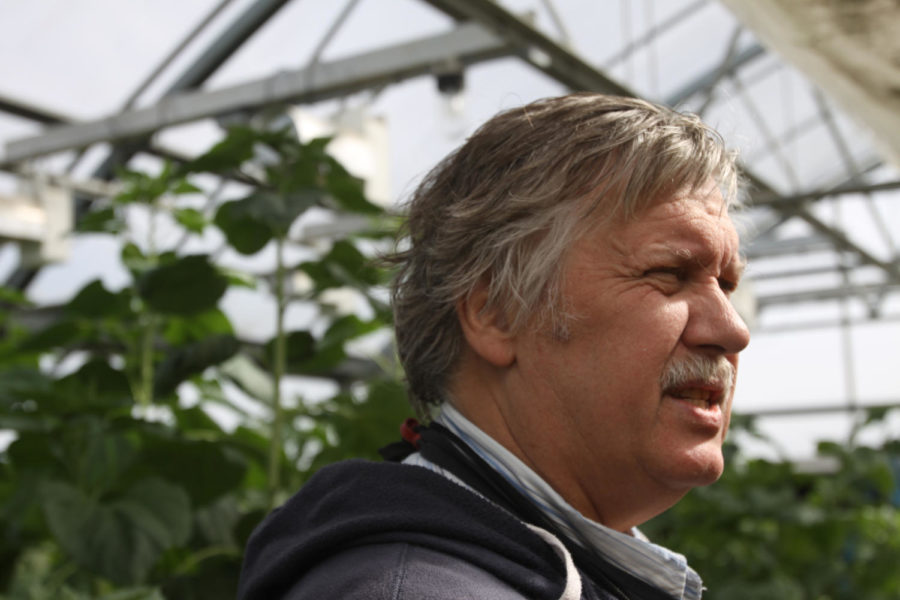Ames seed bank saves for future
October 1, 2012
An agricultural bank that stores the basic units of life necessary for modern farming can be found near Campustown on Mortensen Road and State Street.
The North Central Regional Plant Introduction Station has an important mission: the conservation and distribution of germplasm. Germplasm is the genetic resource for an organism stored in a seed collection for plants or in a nursery for trees.
The station plays an important role in agriculture and society. Future solutions to current problems, such as world hunger and water shortages, lie dormant in hundreds of thousands of the accessions — seed collections — stored within its cold storage vaults.
Mark Millard, a maize curator for the U.S. Department of Agriculture, said the North Central Regional station is one of 26 short-term intermediate facilities spread out across the country in the National Plant Germplasm System. This public germplasm management system is one of the world’s largest collectors and distributors of germplasm.
All of the facilities concentrate on varieties of seed that can grow under the conditions present at each location. Geography and climate are factors that affect the varieties of germplasm stored within a facility. The North Central Regional station specializes in maize.
“We have 20,000 accessions of maize, which about 14,000 of those I can send seeds out,” Millard said.
Seeds can be requested by filling out the proper forms online through Germplasm Resources Information Network.
Millard said the seeds are free. The network only asks the recipient to provide information about reason why the seeds were needed and then how the seed performed. Seeds are distributed for more than just research; there’s a heritage aspect, as well.
“I’ll provide to a farmer,” Millard said. “I’ve had many requests like ‘My grandfather used to grow this variety on our farm; I’d like to grow it again.’”
One such instance is Clyde Black, of Son Seed Farms. The seed farm grew a variety of maize called Blacks Yellow Dent. This maize line was lost in their family in the 1950s. However, the accession was put into the North Central Regional station’s collection because it was a variety used at Iowa State used for breeding, and the seed was returned to the family.
Iowa State has a strong relationship with the North Central Regional station.
“There is a tremendous synergistic relationship on developing and sharing new information,” said Manjit Misra, director of the Seed Science Center. “North Central Plant Introduction Station is a part of the USDA so there is a good relationship between the two. … So I will go one step further and say there is a strong relationship between ISU and the USDA in general.”
The two departments work together and sometimes do projects together. Misra said USDA plant pathologist Charlie Block and the university’s seed health faculty work very closely together in developing new tests for seed diseases. The two teams are currently working on a project to develop new methods for testing a corn disease called Stewart’s Wilt.
Collecting and maintaining genetic diversity within plants is important to agriculture and society because plant breeders use germplasm from the seed banks to develop new seed with unique traits, such as drought resistance and resistance to certain diseases.
“Germplasm is the driver of good seed,” Misra said. “Quality seed is a driver of solutions. … So [quality germplasm] is really the beginning of good agriculture.”







